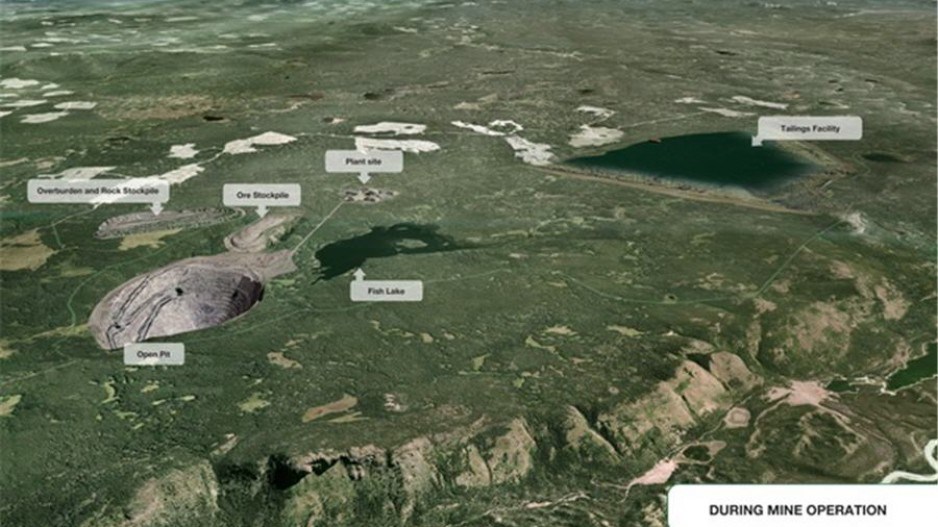Vancouver’s Taseko Mines (TSX:TKO) has lost tandem judicial review applications to the Federal Court of Canada over the federal government’s rejection of the company’s New Prosperity Mine near Williams Lake.
The proposed $1.5 billion open-pit copper-gold mine project was rejected twice by the Canadian Environmental Assessment Agency.
Taseko filed two judicial reviews with the Federal Court, one against a decision by the Ministry of Environment and Governor in Council, and the other against a review panel report.
On December 5, the court dismissed the applications and ordered Taseko to pay the court costs to the Tsilhqot’in First Nation, which has been at the centre of the controversy, and the Government of Canada.
The Tsilhqot’in are bitterly opposed to the mine project, which lies just outside territory which the Supreme Court of Canada in 2014 recognized as Tsilhqot’in territory.
That decision awarded outright title to a smaller parcel of land to the Tsilhqot’in, while recognizing traditional rights to hunt, trap and catch wild horses in a larger territory.
Yunesit’in Chief Russell Myers Ross, director of the Tsilhqot’in National Government, welcomed the court’s decisions, and suggested it is time for Taseko to abandon the New Prosperity Mine project.
“In my opinion, these efforts by Taseko Mines Ltd. represents a waste of time and public money, and I believe it is necessary for this company to move on from fantasizing about this destructive project,” he said in a press release.
“This area remains significant to our nation and this conflict is one reason why we have moved towards developing the Dasiqox Tribal Park – to move towards a space of reconciliation, reciprocity and consent.”
The federal Minister of Environment rejected the mine proposal when it was known as the Prosperity Mine, based on concerns that a lake would need to be drained for the creation of tailings pond.
Taseko changed its plans, rebranded the project the New Prosperity Mine, and tried again, this time with an alternate tailings pond management plan that would not require the lake to be drained. But the federal government rejected that project as well in 2014.
In rejecting the mine project, the federal government determined that seepage from a tailings pond could be greater and more toxic to fish in nearby waterways than the company estimated and rejected its application for an environmental certificate.
The BC Environmental Assessment Agency, on the other hand, had approved the original mine project.
Taseko argued that technical reports relied upon by federal agencies – Natural Resources Canada and Canadian Environmental Assessment Agency – were flawed. It also argued the federal agencies failed in its duty to provide procedural fairness.
In dismissing Taseko’s applications, the court determined that there had been no breach of procedural fairness and that the findings of a panel tasked with evaluating the impacts on the environment of tailings was “reasonable.”
In dismissing the applications, the court awarded costs to the respondents, which include the Tsilhqot’in, Minister of Environment and Attorney General of Canada.
Taseko spokesman Brian Battison declined to comment on the rulings, except to say “we are reviewing and considering the decision.”




